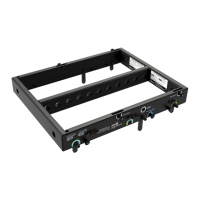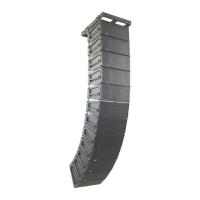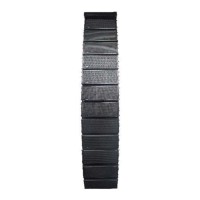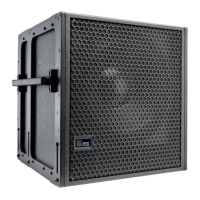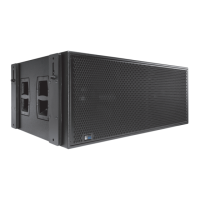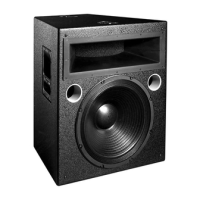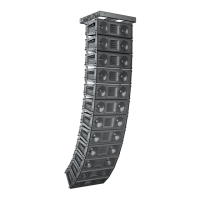11
CHAPTER 3: AMPLIFICATION AND AUDIO
LEO-M’s drivers are powered by a proprietary 3-channel
amplifier with bridged MOSFET output stages. The audio sig-
nal is processed with an electronic crossover, correction filters
for flat phase and frequency responses, and driver protection
circuitry. Each channel has peak and rms limiters that prevent
driver over-excursion and regulate voice coil temperatures.
The LEO-M user panel includes Input and Loop output con-
nectors for audio, Limit and Active LEDs, and RMS connec-
tors and controls (see Chapter 5, “RMS Remote Monitoring
System”).
AUDIO CONNECTORS
LEO-M includes XLR 5-pin connectors for audio Input and
audio Loop output. XLR 5-pin connectors accommodate
both balanced audio and RMS signals.
Audio Input (XLR 5-Pin Female)
The XLR 5-pin female Input connector accepts balanced
audio signals with an input impedance of 10 kOhm. The
connector uses the following wiring scheme:
■ Pin 1 — 1 kOhm to chassis and earth ground (ESD
clamped)
■ Pin 2 — Signal (+)
■ Pin 3 — Signal (–)
■ Pin 4 — RMS (polarity insensitive)
■ Pin 5 — RMS (polarity insensitive)
■ Case — Earth (AC) ground and chassis
Pins 2 and 3 carry the input as a differential signal. Pin 1 is
connected to earth through a 1 kOhm, 1000 pF, 15 V
clamped network. This circuitry provides virtual ground lift
for audio frequencies while allowing unwanted signals to
bleed to ground. Make sure to use balanced XLR audio
cables with pins 1–3 connected on both ends. Telescopic
grounding is not recommended and shorting an input con-
nector pin to the case may cause a ground loop, resulting in
hum.
TIP: If unwanted noise or hiss is produced by the
loudspeaker, disconnect its input cable. If the
noise stops, there is most likely nothing wrong with the
loudspeaker. To locate the source of the noise, check
the audio cable, source audio, and AC power.
LEO-M User Panel
XLR 5-Pin Audio Connectors, Input and Loop Output
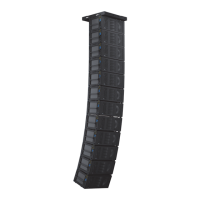
